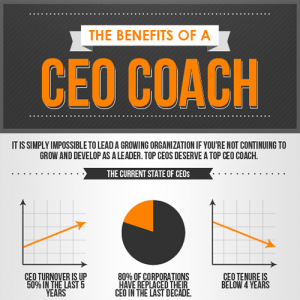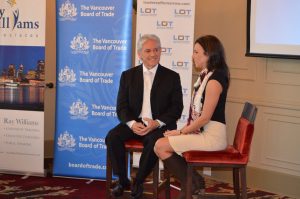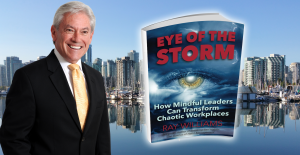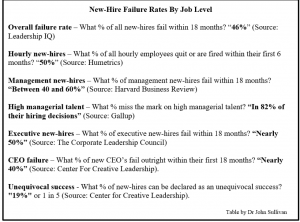Being a leader in current times is very challenging and the failure rate is high. Leaders can maximize their probability of success and job satisfaction by having a personal or executive coach.
Political, business and community leaders are failing in increasing numbers. What do I mean by failure? They are fired or resign because of issues of competence or behavior. According to the Harvard Business Review, two of every five new chief executives fail in their first 18 months on the job. And it appears the main reason for failure has nothing to do with competence, knowledge, or experience, but rather with hubris, ego and a leadership style out of touch with today. Ronald J. Burke at the Schulich School of Business, York University, researched cites data which shows the average tenure of Fortune 500 CEOs is reducing, and the percentage of CEOs being asked to step down for performance reasons is steadily increasing.
Sydney Finkelstein, author of Why Smart Executives Fail, researched several spectacular failures during a six-year period. He concluded that these chief executives had similar deadly habits chiefly related to unchecked egos. David Dotlich and Peter C. Cairo, in their book, Why CEOs Fail: The 11 Behaviors That Can Derail Your Climb To The Top And How To Manage Them,present 11 cogent reasons why leaders fail, most of which have to do with hubris, ego and a lack of emotional intelligence. Call it overconfidence or ego, but powerful and successful leaders often distrust or feel they don’t need advice.
A study by Kelly See, Elizabeth Wolfe Morrison, and Naomi Rothman, published in Organizational Behavior and Human Decision, concluded one characteristic of powerful and successful leaders is high levels of self-confidence. Unfortunately, the researchers say, the higher the self-confidence, the less likely these leaders are open to advice and feedback.
Stanford’s Graduate School of Business recently completed a survey of 200 CEOs, board directors and other senior executives about how they receive and view leadership advice. The survey showed two-thirds of CEOs do not receive coaching or leadership advice from outside sources. Gretchen Gavett, writing in the Harvard Business Review, says that this because there is still some residual stigma that coaching is somehow “remedial” as opposed to something that enhances high performance, similar to how an elite athlete uses a coach. Part of the stigma comes from boards themselves. The other interesting dichotomy emerging from the survey is what CEOs are looking to be coached on versus what the research says they need to be coached on. CEOs rated conflict management skills the highest, whereas board directors say their CEOs need to work on mentoring skills and sharing leadership. Yet much of the research shows that leaders often lack the so called “soft skills”—empathy, compassion, serving others, and humility.
It has been my experience in coaching hundreds of executives, middle managers and aspiring leaders that the areas for greatest growth, which translates into both improved performance and job satisfaction are:
- Self-awareness. Leadership development needs to be an inside-out process that focuses less on competencies and skill acquisition and more on increasing your self-awareness and understanding your values, life purpose, desired legacy;
- Emotional self-mastery. Again, a superficial program of increasing emotional intelligence through techniques and tips of such things as simple listening skills or facilitation skills avoids or neglects the more important requirement to understand, manage and master your emotions; and understand and respond appropriately to the emotions of others. This also means developing humility, and demonstrating the positive emotions of compassion, empathy, kindness gratitude;
- Developing influence and persuasion, rather than power and control behaviors. Mastering these competencies starts from a place of using them for the greater good and not some self serving or manipulative place;
- Empowering others to be independent with encouragement to grow personally and professionally. Leaders can have no greater task than developing others, and this requires coaching and mentoring skills;
- Developing your positive interpersonal skills. This includes your capacity to establish rapport with others; motivate inspire others; and master conflict both resolution skills and having difficult conversations.
- Committing yourself to something bigger. This includes a commitment to help make your community and the world a better place in which to live.
It is unlikely or at best very difficult for someone who has a vested interest in the organization—a boss, a board director, or HR individual—to assist a leader or aspiring leader in developing and mastering the areas described above. And it is difficult for a leader to feel comfortable being totally vulnerable to someone inside the organization. These are not impediments for a relationship with a coach, who can establish an oasis of safety and yet complete with honest feedback with the objective of significant changes in behavior. For the aspiring or new leaders, having a coach to guide them through the often stressful initial stages of being a leader also becomes critical.
Most leadership books and training programs focus on how leaders can achieve more—do more, better, faster, with spectacular results. We’ve become obsessed with continuous improvement at increasing speed, with resulting rising stress levels to leaders and their followers and deteriorating relationships. Mindfulness as both a leadership practice and workplace culture holds the promise to bring back balance and better health. Coaches, working with leaders, can be a great catalyst for increasing their self-awareness, self-management and help bring a leadership style of calmness to the workplace.
Most contemporary management and leadership literature is a predictive recasting of 19th and 20th century institutional thinking–multitasking, bigger, better, faster; planning, analysis and problem solving. In other words, work on steroids.
While it is true that the effectiveness of leaders is determined by the results they achieve, those results are an outcome of the impact the leaders have on others. Behavior is driven by thinking and emotions. Thinking and emotions can be a result of mindfulness or mindlessness.
Neuroscience research clearly established that we act, decide and choose as a result of inner forces, often unconscious, and the brain’s reactive and protective mechanisms often rule us. Research also points to the existence of emotions being contagious and viral in the workplaces, often initiated by the emotional states of leaders.
If leaders believe they don’t have the time to work through all aspects of a problem they are inclined to be narrow in perspective and take cognitive shortcuts, and become more impulsive and reactive. Their actions, in effect become “mindless” and automatic.
Daniel Siegel, a neuroscientist and author of The Mindful Brain: Reflection and Attunement in the Cultivation of Well-Being, contends that a corporate culture of cognitive shortcuts results in oversimplication, curtailed curiosity, reliance on ingrained beliefs and the development of perceptional blind spots. He argues that mindfulness practices enable individuals to jettison judgment and develop more flexible feelings toward what before may have been mental events they tried to avoid, or towards which they had intense averse reactions.
Michael Carroll, author of the Mindful Leader: Awakening Your Natural Management Skills Through Mindfulness Meditation applies the key principles of mindfulness and how they could apply to leaders of organizations. He argues that mindfulness in leaders and their organizations can heal toxic workplace cultures where anxiety and stress impede creativity and performance; cultivate courage and confidence in spite of workplace difficulties in economic downturns; and lead with wisdom and gentleness, rather than only with ambition, relentless drive and power.

To become mindful leaders and tap into that power, they must:
- Let go of their belief in themselves as technical and problem solving geniuses and embrace the notion of becoming mindful partners. This requires building an awareness of and becoming more open to nuance and subtlety;
- Be open to the concept of an unknown future. What we plan for today may not work tomorrow. To succeed in an unknown future, leaders must acknowledge mistakes quickly when things are not turning out as they predicted; be flexible enough to make changes quickly without defending their territory or ego;
- Become skilled at leading through intuitive reflection in addition to logical analysis;
- Become more open and accepting of the world and others, and their differing points of view, rather than trying to reshape the world in the leader’s own image;
- Become more mindful of what is going on in terms of their own thoughts, emotions and body and what is going in context. External mindfulness is being able to sense situations, being aware of the signals and cues in different contexts, and paying attention to them. Internal mindfulness is being aware of one’s body, emotions and thoughts and requires the ability and attitude to monitor one’s inner reality.
Our modern world has become unbalanced, with an excessive focus on doing and speed and multitasking, with little time for just “being” and reflection. Mindfulness can restore that balance for leaders and workplaces. Coaches who specialize in working with leaders in organizations, particularly senior leaders, can shape their coaching practice and methodologies to incorporate mindfulness successfully. The impact can be significant.
Most serious atheles, entertainers, movie stars and politicians have one. And a majority of senior executives have one. A coach. Coaching has become the hottest new profession in the past decade and it’s growing. There are all kinds of coaches–from mom’s working at home coaches to career coaches to CEO coaches.
The much asked question about coaching is its return on investment. The majority of studies including one by Joy McGovern and her colleagues at research firm Manchester, indicate that executives who received coaching valued the service between $100,000 and $1-million. Joyce Russell, the Dean of the Robert H. Smith School of Business at the University of Maryland contends that assigning a coach to an executive is now viewed as a privilege and a sign the organization values the executive’s contributions and is willing to invest money in his or her growth and development.

So can anyone benefit from having a coach? What can they do for you?
In my articles in the National Post, and the Vancouver Board of Trade, Sounding Board, I argued executive coaching, also called business or corporate coaching, is an outgrowth of leadership development programs. According to the Harvard Business Review, executive and business coaching is worth $1 billion annually in North America.

Although coaching has been gaining widespread acceptance by organizations in the l990’s, it has only been in recent years that it has flourished. Companies have hired professional executive and business coaches because:
- of the increase in executive stress and failure;
- corporate leaders require more complex skills today;
- executives and managers face more frequent performance assessments;
- the old command-and-control style of leadership is out of sync with the younger, inner-directed, and culturally diverse workforce;
- the economic realities of short-term financial success has altered most work organizations.
Recently, Diane Coutu and Carol Kauffman in an article in the Harvard Business Review, conclude that most companies have moved beyond using coaches to fix problem employees to now developing the capabilities of high performing achievers. While executive or business coaches are often hired to deal with leadership or business issues, the most effective coaches invariably delve into the client’s personal life from an integrated holistic perspective.
The criteria used to choose a coach is important. Because coaching has no regulatory professional standards, the knowledge, skills and experience of coaches vary widely, with their fees ranging from pro bono to thousands of dollars per hour. Professionals in other more traditional professions such as psychologists, accountants, financial advisors and others are now gravitating to the coaching profession, as well.
Coaching training is not a guarantee for an effective coach, as the quality of coaching training programs varies widely. In my view, an in-depth knowledge of human behavior and performance, combined with actual leadership experience is a prerequisite for providing the kind of coaching expertise that a high performing executive, business owner or professional needs. And the coach needs to have the knowledge of how to inspire, motivate and challenge a top performer by expanding their strengths, rather than focusing on weakness, and having the confidence and courage to confront an already successful individual, so they can both achieve that next level of excellence, or address issues of work-life balance and personal growth.
There is no doubt that a highly skilled coach can be a trusted adviser and mentor, and provide for the client an oasis of calm where the individual can share dreams, share fears and concerns and cooperatively develop a plan to reach greater levels of success and happiness.
So now the question is if coaches are of great benefit for senior executives in organizations, with clear evidence of their positive impact, why don’t companies make available coaches for all employees as a more effective method of delivering training and improving performance? It may be a better ROI decision that traditional training.
And in the absence of organizations making that commitment, the smart employee can use a personal coach as a most effective means for personal and professional growth.
Yet, in a survey of 200 CEOs, board directors and other senior executives about how they receive and view leadership advice, Stanford’s Graduate School of Business found two-thirds of CEOs do not receive coaching or leadership advice from outside sources.
In an article the Harvard Business Review, Gretchen Gavett attributes this to some residual stigma that coaching is somehow “remedial” as opposed to something that enhances high performance, similar to how an elite athlete uses a coach. Part of the stigma comes from boards themselves.
The other interesting dichotomy emerging from the survey is what CEOs are looking to be coached on versus what the research says they need to be coached on. CEOs rated conflict management skills the highest, whereas board directors say CEOs need to work on mentoring skills and sharing leadership. Much of the research shows leaders often lack the so called “soft skills”— empathy, compassion, serving others, and humility.
An outside coach can establish an oasis of safety, while providing honest feedback with the objective of aiding significant changes in a leader’s behaviour. For the aspiring or new leaders, having a coach to guide them through the often stressful initial stages of being a leader also becomes critical.
The job of a chief executive has never been more challenging or rewarding. Despite generous compensation, perks and attention it can be a lonely one. Which may be why boards and chief executives are increasingly turning to executive coaches to assist the heads of companies in their performance and growth and reduce attrition.
While earlier generations managed without coaches, leaders today face more pressures than at any other time. They must deal with rapidly changing markets, technologies and workforces, increased financial and legal scrutiny … and more. Top executives who feel that they can handle it by themselves are more likely to burn out, and make poor or no decisions, resulting in significant loss of opportunities, human resources and financial resources.
The CEO’s job is unique from several perspectives: No one else needs to hear the truth more, yet gets it less from employees; no one else is the focus of criticism when things go wrong; no one else is the final decision maker on difficult and often lose-lose decisions; and no one else enjoys the same type of hero-celebrity status and rewards.
Paul Michelman, writing in the Harvard Business Review Working Knowledge, says most major companies now make coaching a core of their executive development programs. The belief is one-on-one personal interaction with an objective third party can provide a focus other forms of organizational support cannot. A 2004 study by Right Management Consultants found 86% of companies used coaches in their leadership development program.
Marshall Goldsmith, a high-profile coach to leaders in Fortune 500 companies and author of The Leader of the Future, argues leaders need coaches when “they feel that a change in behaviour — either for themselves or their team members — can make a significant difference in the long-term success of the organization.”
Eric Schmidt, chairman and chief executive of Google, said his best advice to new CEOs is to have a coach. “Once I realized I could trust him [the coach] and that he could help me with perspective, I decided this was a great idea…” he said. While he admits the cost of executive coaches, particularly a good one, is not cheap, he adds “compared to the decisions CEOs make, money is not the issue.” “If you have a new perspective, if you feel better with your team, the board and the marketplace, then you have received real value,” Schmidt says.
“Executives who rise to the C-suite do so largely based upon their ability to consistently make sound decisions. However while it may take years of solid decision-making to reach the boardroom it often times takes one bad decision to fall from the ivory tower. The reality is that in today’s competitive business world an executive is only as good as his/her last decision, or their ability to stay ahead of contemporaries and competitors,” Mike Myatt writes in an article, The Benefits of a Top CEO Coach.
Despite its popularity, many senior executives are reluctant to report they have a coach, says Jonathan Schwartz, former president and chief executive of Sun Microsystems, who had an executive coach.
While board members can be helpful, most leaders shy away from talking to the board about their deepest uncertainties, argues John Kador, in CEO Magazine. Other CEOs can lend an ear, but there are barriers to complete honesty and trust. “No one in the organization needs an honest, close and long-term relationship with a trusted advisor more than a CEO,” writes Kador, who reports conversations with several high-profile CEOs.
Copyright: Neither this article or a portion thereof may be reproduced in any print or media format without the express permission of the author.
Read my latest book: Eye of the Storm: How Mindful Leaders Can Transform Chaotic Workplaces, available in paperback and Kindle on Amazon and Barnes & Noble in the U.S., Canada, Europe and Australia and Asia.




